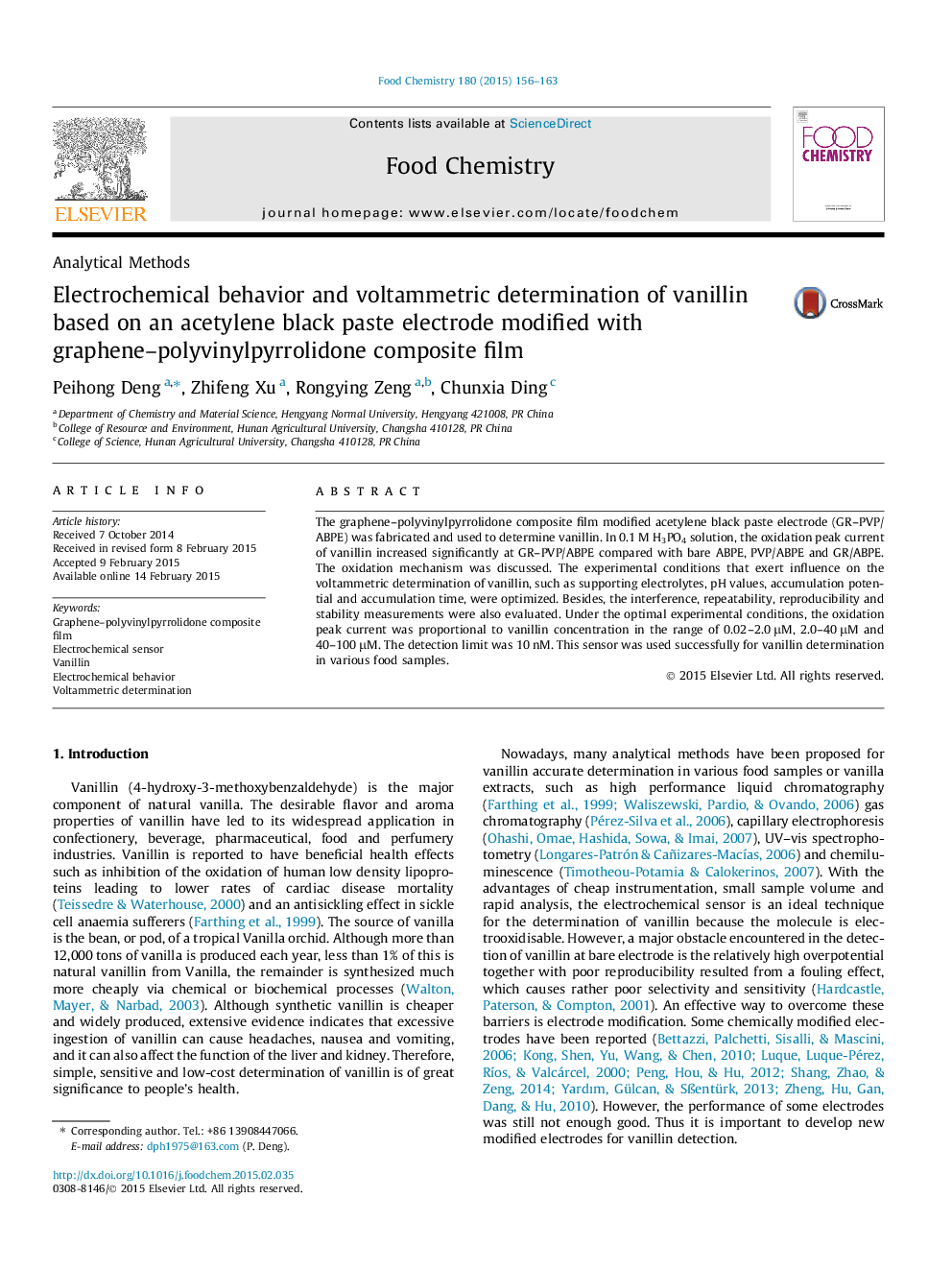| Article ID | Journal | Published Year | Pages | File Type |
|---|---|---|---|---|
| 1184507 | Food Chemistry | 2015 | 8 Pages |
•A novel vanillin sensor based on PVP–graphene and acetylene black was developed.•Graphene and acetylene black were both introduced to amplify vanillin signals.•The sensor exhibited a wide liner range with a low detection limit of 10 nM.•The sensor preparation was simple, low cost and efficient.
The graphene–polyvinylpyrrolidone composite film modified acetylene black paste electrode (GR–PVP/ABPE) was fabricated and used to determine vanillin. In 0.1 M H3PO4 solution, the oxidation peak current of vanillin increased significantly at GR–PVP/ABPE compared with bare ABPE, PVP/ABPE and GR/ABPE. The oxidation mechanism was discussed. The experimental conditions that exert influence on the voltammetric determination of vanillin, such as supporting electrolytes, pH values, accumulation potential and accumulation time, were optimized. Besides, the interference, repeatability, reproducibility and stability measurements were also evaluated. Under the optimal experimental conditions, the oxidation peak current was proportional to vanillin concentration in the range of 0.02–2.0 μM, 2.0–40 μM and 40–100 μM. The detection limit was 10 nM. This sensor was used successfully for vanillin determination in various food samples.
